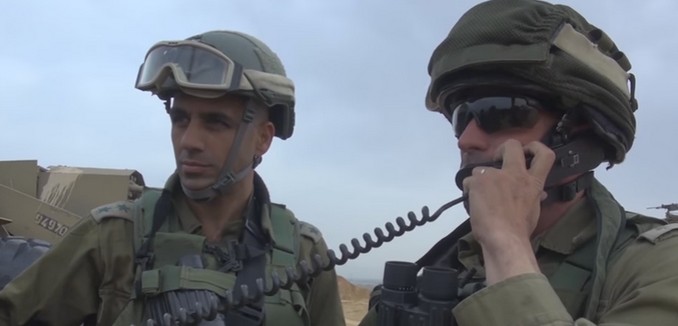The Israeli military has uncovered a tunnel built by the Iran-backed terrorist group Hamas that breaches into Israeli territory, Haaretz reported on Monday. It is the first such tunnel discovered inside Israel since the end of the 2014 Gaza war, when the Israel Defense Forces destroyed over 30 Hamas tunnels, 14 of which extended into Israel.
The tunnel was detected during an IDF operation 10 days ago and was subsequently destroyed, according to information released for publication on Monday. An opening to the tunnel was discovered between the separation fence with Gaza and among a number of military bases and towns in southern Israel, a defense official said.
A Palestinian website claimed that the tunnel was built over the course of two years and had infrastructure that would support extended stays. Israeli sources believe that the tunnel had a number of branches that could be used for abduction purposes.
While Hamas is aware of Israeli efforts to detect its tunnels, the group has continued to employ its force of several hundred diggers to develop its underground network. “Hamas is digging tunnels for purposes of offense and defense,” a senior Southern Command officer told Haaretz. The official observed that Hamas was digging tunnels both before and after the 2014 war, adding that “[the] working assumption is that other invading tunnels exist. We are active anywhere there is such concern.” The officer noted that the discovery was the result of Israel’s high-tech efforts to uncover tunnels.
Israeli Defense Minister Moshe Ya’alon said last week that “[the] search for the tunnels has been at the top priority of the defense network and the IDF, and we have not held back our efforts. Dealing with the issue of tunnels is very complicated, and the State of Israel is the world-leader in the field.” Ya’alon added, “In the past few months, Hamas has experienced a number of cases of tunnel collapses, diggers who die as they labor and now also this discovery,” suggesting that Israel had something to do with the previous tunnel collapses.
In February, IDF Chief of Staff Lt. Gen. Gadi Eisenkot said, “We are doing a lot, but many of [the things we do] are hidden from the public. We have dozens, if not a hundred, engineering vehicles on the Gaza border.”
Palestinian media recently reported that Israel was questioning a Hamas operative who helped supervise tunneling operations, according to The Times of Israel. It wasn’t clear whether Israel had captured him or if he had turned himself in.
At least three members of Hamas were killed in a tunnel collapse last week, the twelfth reported this year.
Haaretz’s defense correspondent Amos Harel wrote in January that “Hamas is investing great efforts and huge sums in the tunnel project. It is reasonable to assume that the number of tunnels crossing under the border is close to that on the eve of Protective Edge,” or the 2014 Gaza war.
In Your Complete Guide to Hamas’ Network of Terror Tunnels, which was published in the April 2016 issue of The Tower Magazine, Dan Feferman observed that the people of Gaza pay the price for Hamas’ efforts to rebuild its terror tunnels.
There is a tragic side to Hamas’ tunnel strategy. Roughly 9,000 homes were destroyed during Protective Edge, and very few have been rebuilt. This is not Israel’s fault, as building supplies flow regularly into Gaza. But according to declassified intelligence reports, these supplies are routinely stolen by Hamas in order to serve the group’s terrorist purposes. Hamas smuggles in cement, diverts from construction and humanitarian donations, and even raids civilian construction sites in order to rebuild its tunnels. Estimates are that one tunnel can cost a million dollars to build and uses around 50,000 tons of concrete. Close to a million tons of concrete were poured into the terror tunnels before 2014.
The tunnels, in this sense, are a zero-sum game. If the same materials were put into reconstruction, the Gazan people would be better off and, lacking this crucial asymmetric warfare capability, Hamas would be less tempted to attack Israel. On the other hand, with the same limited materials going to terror tunnels, the people of Gaza continue to live in ruins while Hamas rebuilds its war machine.
While Hamas appears to be deterred in the short term, it continues to believe that the tunnels are its only strategic weapon. While it may not be interested in another war, the tunnels continue to be dug for a reason. Once used, however, they lose their effectiveness, as the IDF knows their locations and can thus destroy them. Hamas is well aware of this dilemma. The tunnels essentially leave Israel and Hamas in an arms race—with Israel racing to develop a technological solution before Hamas decides to launch another round of fighting.
[Photo: Israel Defense Forces / YouTube ]




